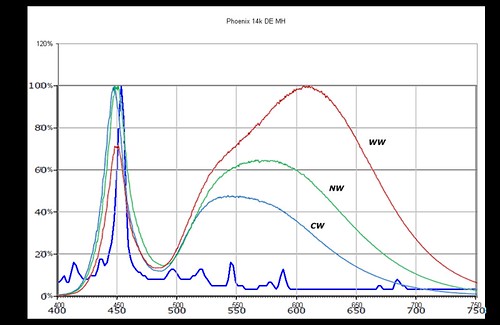Coral reefer said:
I've heard whispers of missing spectrum in accounting for the coraline lack. What is your take on why it is lacking? What spectrum is missing/needed more?
I have three wild guesses.
Guess 1: They are missing in the Cyan / Green.
A) LEDs are bad in that area.
B) The color of the photosynthetic life is often the opposite of what they need.
(What you see is what is not absorbed)
So green algae likes red + blue, so it is green.
Coralline varies, but it is rarely dark algae green.
Guess 2: They are missing the deep blue / purple wavelengths, near UV.
A) LEDs are bad in that area, even Royal Blue.
B) That is a known requirement for terrestrial plants with more complex breeding cycles.
A lot of garden places recommend that during flowering.
C) Those wavelengths are stronger deeper in the water. Since the reds get wiped out pretty quick.
So it makes sense they would be better adapted for that.
Guess 3: Adaptability
The wavelength issues with LEDs are an issue for photosynthetic life.
Green algae is a much simpler beast, there is a lot of variation, and it seems to grow/die/grow faster.
As such, perhaps it can adapt to the lighting better or quicker.
Could be all of the above, or something completely different.








